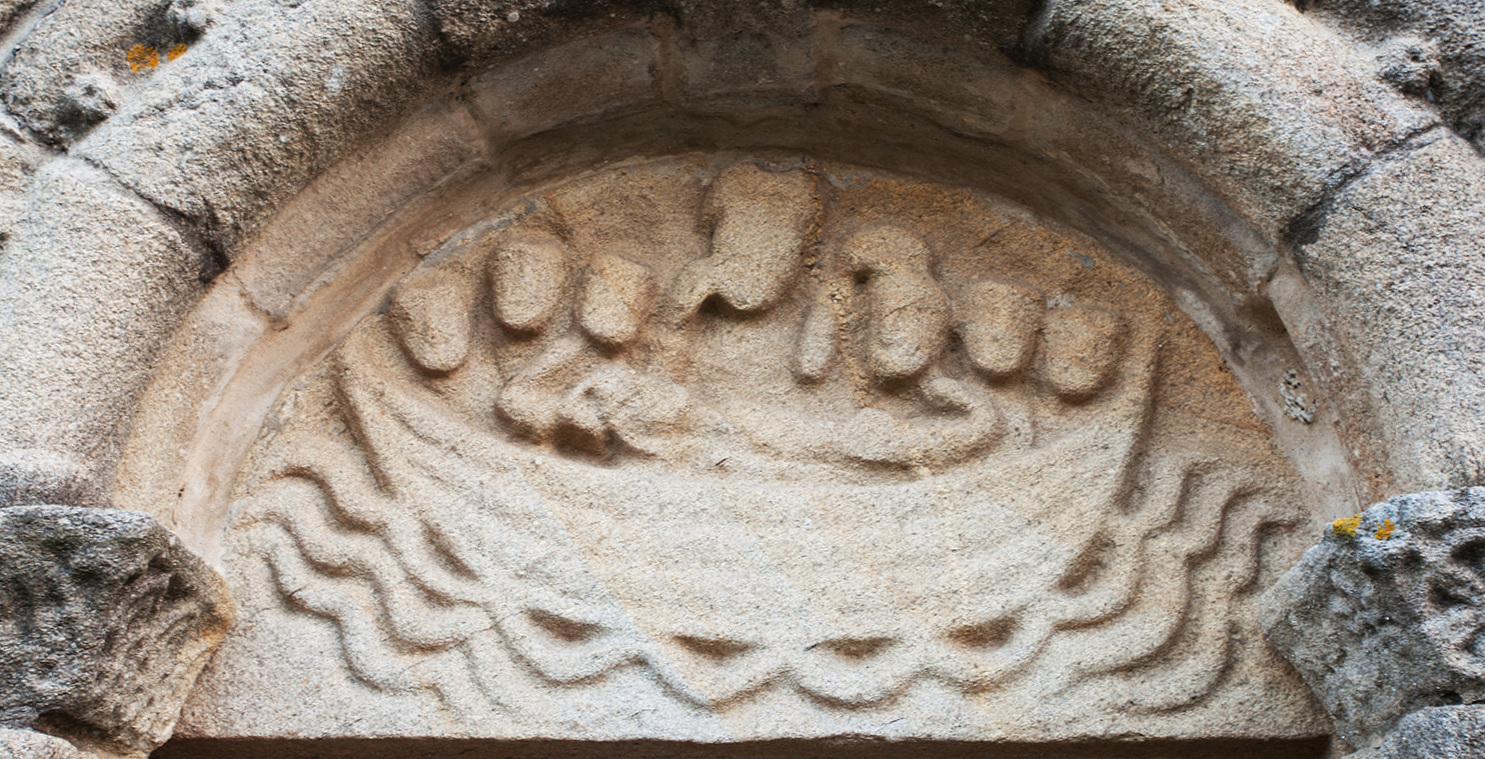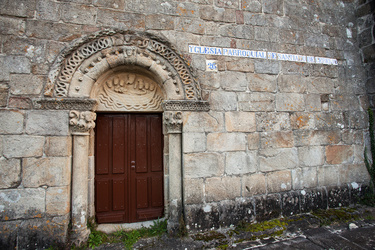
- O mar de Vimianzo
The church
The church
The parish church of Santiago de Cereixo is one of the best examples of Romanesque art along the Costa da Morta coast.
Its construction dates back to the end of the 12th century and it shares some features found at the churches in Xaviña (Camariñas) and Leis (Muxía), where the same artists are likely to have worked. Experts have claimed that masons who had worked on the cathedral in Santiago later went to work on the Monastery of Moraime (Muxía) and then took on the building of numerous rural chapels and churches all along the Costa da Morte coast, including the one at Cereixo.
At least two different master masons or workshops appear to have laboured on the construction. The first, influenced by the work in Santiago de Compostela, worked on the apse, and the second was responsible for the famous south door and the main entrance on the west side. This latter craftsman is also linked to the tympanum showing the last supper on the church at Moraime.
Cereixo´s Door of St.James
On the south door of the parish church of Santiago in Cereixo is the oldest depiction of the translatio, the transfer of the body of St. James. According to the traditional story given in the 12th-century Codex Calixtinus, after the Apostle had been martyred, his disciples, called the Seven Apostolic Men, stole the saint’s body at the port of Jaffa and placed it on a boat that was guided by God’s hand until it reached Galicia. That is the scene represented on the church of Cereixo.
A wooden boat on the waves can be seen in the tympanum. Inside the boat is the body of St. James, lying horizontally, surrounded by the seven disciples. At the top of the tympanum are the figures of a bishop with a staff and an angel watching over the scene.
A secondary Way of St. James
The presence of the cult of St James in Cereixo, very near to one of the most traditional shrines at Muxía, led the academic Xosé María Lema to formulate the hypothesis that there could have been a secondary pilgrim route to Santiago de Compostela. The route would have started in the Ría de Camariñás and continued up the course of the Rio Grande river along which there is a series of shrines dedicated to the Virgin Mary and also linked to the cult of St. James. These shrines include Our Lady of Castrobuxán (Calo), The Shrine to Our Lady of the Pilgrimage at A Lagoa (Salto), Our Lady of Montetorán (Bamiro) and Our Lady of Ermida Vella (Tines).





